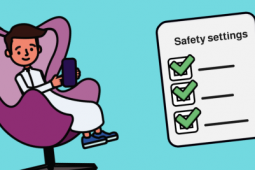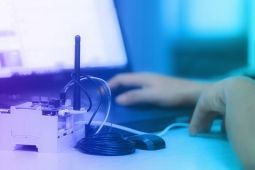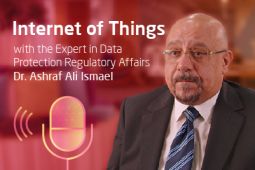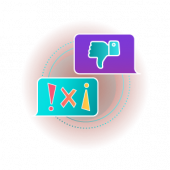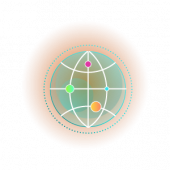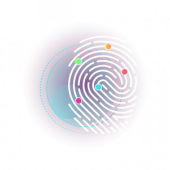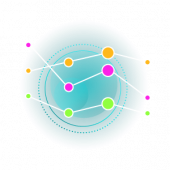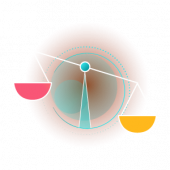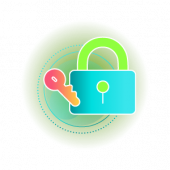Do I know how the devices around me are connected?
The Roles and Responsibilities in Distance Teaching and Learning

Distance teaching and distance learning have become the new global standard. Distance education uses modern technologies to facilitate the processes of teaching, learning, and communication between participants in education. This form of education has emerged as a result of changing lifestyles, rapid technical development, and extraordinary circumstances, all of which have led to shifts and developments in the needs of learners.
This method can broadly provide education and extend it to everyone, as it encourages independent learning and extends the responsibility to include not only the teachers but also the students and parents. It provides a creative atmosphere for learners and teachers alike, and a suitable environment to propose new ideas and presenting up-to-date information that captures the learners' interest.
Overview:
While the typical student role is mainly to receive education, distance learning requires pupils to take on different roles, to some extent, to those expected of them in conventional learning. This is in the teacher’s important role in guiding students by supporting and managing their learning process, as teachers must also focus on planning and designing the content, and come up with a strategy for the teaching process.
Parents also play an important role in managing the home environment so as to support children's learning and help them perform at their best. A parent may at times need to perform the role of a teacher, especially in the early stages of education or if they have a child with special needs. Parents may also be required to support the teachers and the school, as well as their children, through effective communication and initiative.
We can therefore say: The role of schools or educational institutions, including the Ministry of Education and its departments, is awareness-raising, institutional, organizational, and administrative roles. These institutions must provide digital resources and applications. and must also offer a qualified staff of teachers, technicians, and administrators with proper and continuous training, and offer support to all parties involved in the distance learning process. This needs to be done in order to achieve high-quality outcomes and to ensure a smooth workflow for distance education providers, in accordance with their plans and available capacities. The roles and responsibilities of each of these four parties will be covered in some detail below.
Students’ Roles and Responsibilities:
The teaching and learning processes, whether conventional or remote, must be centered around the learner. The student’s roles and responsibilities, therefore, make up the largest part in the chain of interactions that takes place during distance teaching and learning. These interactions are classified into three types:
- The learner’s interactions with the content.
- The learner’s interactions with their teacher.
- The learner's interactions with their peers.
As research on the roles and responsibilities of students in distance learning shows, students are advised to be aware of, and adhere to, the following:
- Maintain constant interaction and response with the teacher, content, and peers, and obtain appropriate feedback to improve performance.
- Take on self-responsibility for tasks and performance. Each student should be aware that they are responsible for their own learning, and that they can decide what they want to learn based on their needs. Their education should not be limited to what they receive from teachers or peers. Rather, they must, individually or cooperatively, research and investigate the topics of the lessons.
- Consult relevant adults (teacher, guardian, etc.) when needed, through various means of communication.
- Engage in independent learning at times.
- Acquire sufficient technical skills to communicate effectively and perform their tasks appropriately.
- Maintain a level of active participation, the same as during conventional learning.
- Conduct continuous self-evaluation, assessing performance with the aim of improving and developing it.
Teachers’ Roles and Responsibilities
The teacher's main role in distance education includes preparing a coherent plan for learning, and design mechanisms and implementation procedures to manage teaching and learning processes based on the learners’ needs. The teacher is also expected to be prepared to guide students and provide them with the proper support.
As research on the roles and responsibilities of teachers in distance education shows, teachers are advised to be aware of, and adhere to, the following:
- Identify students’ needs.
- Design an implementable action plan and measure the extent to which its objectives are achieved while taking into account the students’ needs, their levels of knowledge, and their learning styles, and using appropriate and mechanisms and procedures.
- Possess the proper skills to manage distance learning and to ensure the participation of most, if not all, of the students.
- Provide students with appropriate and timely directions and instructions.
- Encourage students and motivate them to participate proactively and effectively, providing them with appropriate feedback in a timely manner.
- Maintain a continuous back-and-forth interaction with students about the taught content, and obtain feedback from them on how to improve their performance.
- Take into account individual differences and disparities, and conduct differentiated and stratified education plans when required.
- Take on self-responsibility for tasks and performance. Each teacher should be aware that they are responsible for the students’ learning process, and managing it in a way that ensures they receive a quality education and improve their performance and future achievement. Teachers must therefore carry out good research and planning, individually or collaboratively, on the topics of the lessons.
- Consult the concerned persons (school administration, student, parent, etc.) and engage in effective communication with them whenever needed through various means of communication.
- Acquire sufficient technical skills to communicate effectively and perform tasks properly, or even train students and sometimes direct them in this regard.
- Evaluate student performance using appropriate methods and tools. Document attendance, tasks, and problems that students may face or are facing, and work to resolve these problems individually or with the help of others.
- Adopt mechanisms and strategies that contribute to maintaining an effective level of student participation, just as is done in conventional education.
- Conduct continuous self-evaluation and performance assessments with the aim of improving and developing it.
Parents’ Roles and Responsibilities:
Distance teaching and learning present enormous challenges for all involved in education, and it may take some time for us to adapt. Without a doubt, parents face a number of challenges and take on a set of responsibilities, as they have sizable influence in the teaching and learning process. And due to their important role in ensuring the proper functioning of teaching and learning processes, parents, like other participants in the education process, must adapt to this rapid and unpredictable shift towards distance learning.
Parents need to prepare the home environment to support children’s learning and help them perform their tasks with ease. Furthermore, a parent may assume the role of a teacher, especially with students in early education or those with special needs. Parents also need to provide support to teachers and the school through effective communication.
All of this can be done according to a set of procedures and preemptive measures, including:
- Ensuring the development of good habits for all family members. These habits should be flexible and should fit within the schedule of the family’s daily life, such as bedtime, dinner time, and time to study, play or use digital devices, etc. If parents have to work from home on occasion with several school-age children at home, it may be necessary to set a schedule, and put in place rules that everyone agrees on to abide by on when to use electronic devices; where to work or do homework; and even quiet periods to focus on performing tasks.
- Create a suitable place for learning activities. Ensure that it is calm, free of distractions, has a good internet connection, and preferably with the doors open so as to facilitate support and encouragement from parents as they monitor the learning process and the children’s screen time.
- Maintain communication with teachers and the school to provide support for the children. Contribute to problem-solving and facilitate the learning process.
- Help the children obtain the best independent learning through support, motivation, and encouragement. This does not require the parent to be a full-time teacher or an expert on education. Note that early-stage students and children with special needs need more support and assistance to receive a good education.
- Be present, and maintain a rapport with your child, especially at the beginning and end of each day. For example, early in the day, you can ask, “What subjects or topics will you learn about today? Are there any assessments today? Do you need help?” At the end of the day, you can ask, “How did you do today? Did you face any challenges while learning? What did you learn today?”
- Manage stress and encourage physical activity. In light of the current crisis, and with some family members working from home, everyone needs to stress relievers. Children need an adult to help them manage their feelings so that they do not lose their enthusiasm or focus on learning. This can be achieved by allocating time for playing sports; sitting together as a family; participating in recreational activities; maintaining effective communication; offering encouraging words and behavior; and helping children to communicate with their friends and peers according to clearly set rules.
Roles and Responsibilities of the School or Educational Institution - Including the Ministry of Education and its Departments:
The role of the school or the educational institution, which includes the Ministry of Education and its departments, is no less important than the roles of others, and it is rather is their basis and driver. As we mentioned earlier, these institutions play an awareness-raising role by emphasizing the importance of education and distance learning and providing information on how to access distance education and handle its mechanisms in an easy and accessible manner. It is also a foundational role concerned with providing the appropriate infrastructure to meet the different needs of learners and teachers alike.
It has the role of organizing all teaching and learning processes; and allocating and managing human and material resources; and monitoring and evaluating implementation. To that end, the school or ministry provides digital resources and applications, visual and audiovisual lessons and tutorials, interactive websites, and qualified staff of teachers, technicians, and administrators. It provides them with adequate and continuous training and supports to the abovementioned parties (teachers, parents, students, etc.). It performs these functions in order to achieve high-quality educational outcomes and to ensure an easy and smooth workflow according to the available plans and capabilities.
Finally, the commitment of students, teachers, parents, and schools to fulfill their roles and responsibilities in the best way they can, will undoubtedly lead to quality learning experiences. The commitment of all parties also raises the level of students’ achievement on the cognitive, skill, and emotional levels, and will turn the challenges of distance learning into opportunities for professional and cognitive growth. This will also ensure the sustainability of teaching and learning, and the effective use of available resources to achieve better learning that meets students’ needs as well as the requirements of the time.
@2x.png)

